Select Language
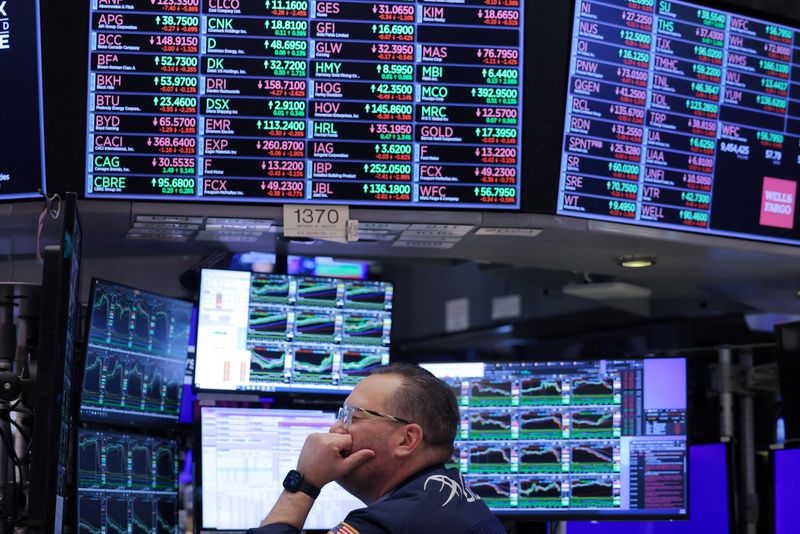
The S&P 500 closed sharply higher Tuesday for the sixth-straight day, underpinned by falling Treasury yields and signs of flexibility on tariffs from the White House as well as signs of further trade deals just as the earnings season continues to heat up.
At 4:00 PM ET (21:00 GMT), the Dow Jones Industrial Average gained 300 points, or 0.8%, while the S&P 500 index gained 0.6%, and the NASDAQ Composite gained 0.6%.
U.S. President Donald Trump, who is set to sign an order on Tuesday, easing some of his 25% tariffs on cars and car parts, said the reprieve will offer automakers short term help.
"We just wanted to help [automakers] enjoy this little transition, short-term. If they can’t get parts, you know, it has to do with a very small percentage. If they can’t get parts, we didn’t want to penalize them," Trump said.
In another positive note on the trade front, Commerce Secretary Howard Lutnick told CNBC that the U.S. was close to announcing a major trade deal.
The move comes a day after Secretary Bessent in an interview with CNBC on Monday, said many countries have offered "very good" tariff proposals to the U.S.
However, this positive tone was undermined by the White House slamming Amazon for reportedly planning to display the cost of President Donald Trump’s tariffs next to the total price of products on its site.
“This is hostile and political act by Amazon,” White House press secretary Karoline Leavitt said at a press briefing earlier Tuesday.
Treasury yields drop as consumer confidence falls
Treasury yields slumped on Tuesday after the Conference Board announced consumer confidence fell 7.9 points to 86.0 in April. This was the lowest reading since May 2020 and below the 87.7 expected by economists polled by Investing.com.
"In the details of the report, a gauge of current conditions slipped 0.9 points to 133.5, a seven-month low, and a gauge of future expectations plunged 12.5 points to 54.4, the lowest reading since 2011," Stifel said in a Tuesday note.
Elsewhere, the Atlanta Fed’s GDP Now for Q1 fell to -2.7%, from -2.5%, and the JOLTS Job Openings for March fell to 7.192 million from 7.48 million.
Investors are also bracing for a series of other U.S. economic data releases later this week, including the Federal Reserve’s preferred inflation gauge – the PCE price index, and the monthly U.S. jobs report.
Busy earnings schedule awaits "megacaps"
Markets also awaited earnings from the “magnificent seven” megacaps, including Apple (NASDAQ:AAPL), Microsoft (NASDAQ:MSFT), Amazon (NASDAQ:AMZN), and Meta Platforms (NASDAQ:META), this week.
Microsoft and Meta are set to report on Wednesday, while Apple and Amazon are scheduled to report their earnings on Thursday.
This is set to be a very busy earnings week, with about one-third of S&P 500-listed firms slated to post results this week.
Earlier Tuesday, General Motors (NYSE:GM) stock fell 0.7% despite the auto giant reporting first-quarter earnings and revenue that topped analyst expectations, as it suspended its guidance and froze share buyback program in response to new Trump tariffs.
Coca-Cola (NYSE:KO) stock gained 0.8% after the soft drinks giant reported a drop in first-quarter revenue, even after price hikes.
Spotify (NYSE:SPOT) stock fell more than 3% after the streaming music service unveiled a current-quarter guidance for monthly active users that was below expectations.
United Parcel Service (NYSE:UPS) stock slipped 0.5% lower even after the delivery giant reported better-than-expected first-quarter 2025 results, with adjusted earnings and revenue surpassing analyst estimates.
Royal Caribbean (F:RCL) stock was flat after the cruise operator raised its annual profit forecast on Tuesday, benefiting from strong bookings for its premium sailings to regions such as Alaska and Japan.
(Ayushman Ojha and Peter Nurse contributed to this article.)

Gold prices slipped over 1% in Asian trading on Wednesday, after U.S. President Donald Trump’s administration said it would ease the impact of auto tariffs, and affirmed trade talks with China.
Investors cautiously awaited key U.S economic indicators this week, including the Federal Reserve’s preferred inflation gauge – the PCE price index.
As of 02:08 ET (06:08 GMT), Spot Gold declined 1.1% to $3,308.93 per ounce, while Gold Futures expiring in June fell 0.8%% to $3,322.55 an ounce.
US to ease impact of auto tariffs; says in trade talks with China
President Donald Trump’s administration on Tuesday said Washington will soften the impact of its automotive tariffs by easing some duties imposed on foreign parts in domestically manufactured cars.
A Wall Street Journal article, which first reported the move, stated that the adjustment means automakers paying Trump’s auto tariffs will be exempt from additional duties, such as on steel and aluminium.
Moreover, in an interview with CNBC on Monday, Secretary Bessent said many countries have offered ’very good’ tariff proposals to the U.S.
He also stated that the U.S. government is in contact with China and that it is up to China to de-escalate the situation.
These developments eased some fears around rising US-Sino trade tensions.
Gold, which recently reached record highs, thrives in periods of economic uncertainty, geopolitical tensions, and rising inflation, as investors seek safe-haven assets to protect their wealth.
Among other precious metals, Silver Futures fell 0.4% to $32.862 an ounce, while Platinum Futures were unchanged at $993.20 an ounce.
US April jobs data, Q1 GDP, PCE inflation awaited
The JOLTS job openings report for March will be released later on Tuesday, while April U.S. jobs data is scheduled for Friday.
The U.S. will also report its first-quarter gross domestic product (GDP) data, and the PCE price index this week.
These datapoints will be crucial to gauge the Fed’s rate outlook, as it has adopted a wait-and-see approach amid global trade uncertainty.
Copper prices subdued; China holds off on fresh stimulus
Copper prices were largely muted as investors sought clarity on U.S.-China tariff talks.
China’s policymakers have vowed to support businesses and workers hit by steep U.S. tariffs, but refrained from announcing fresh stimulus measures.
Benchmark Copper Futures on the London Metal Exchange were unchanged at $9,392.20 a ton, while Copper Futures expiring in May lost 0.8% to $4.8620 a pound.
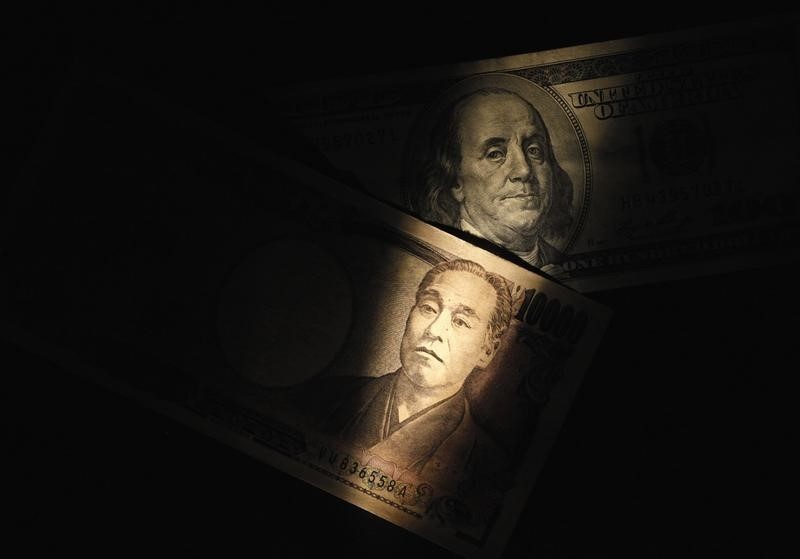
Most Asian currencies firmed slightly on Tuesday, advancing against a battered dollar as traders remained uncertain over the U.S. plans for more trade tariffs, as well as a potential deal with China.
A market holiday in Japan made for softer trading volumes in the region.
Most regional currencies were nursing steep losses in recent weeks, as a bitter tariff exchange between the U.S. and China and heightened uncertainty over the global economic outlook battered risk appetite.
But some of these losses were softened by a sharp drop in the dollar, as traders also appeared to be slashing positions in U.S. assets. This trend was also apparent with a sharp fall in U.S. Treasuries, although they regained some ground this week.
The Chinese yuan and the Taiwan dollar were among the better performers on Tuesday, while the Japanese yen weakened slightly as risk appetite improved.
A Wall Street Journal report said U.S. President Donald Trump was considering some alterations to his steep automotive tariffs, in order to lessen their impact.
Elsewhere, the Canadian dollar weakened, with the CAD/USD pair down 0.3% after the Liberal Party under Mark Carney was seen heading for a close victory in federal elections defined by Trump’s tariff and sovereignty threats.
Dollar near 3-yr low as tariff uncertainty persists
The dollar index and dollar index futures both moved little in Asian trade after coming back in sight of a three-year low this week.
The greenback was battered by what appeared to be a mass pivot away from U.S. assets, amid uncertainty over Trump’s trade and economic agenda.
The WSJ reported on Monday evening that Trump was considering scaling back some of his automotive tariffs, amid heightened concerns over their economic impact. The move offered some relief to markets, and sparked bets that Trump will seek further deescalation in his tariff agenda.
U.S.-China trade talks are a major point of focus, although both sides have offered wildly different signals on negotiations. Trump claimed that his administration was in talks with China, while Beijing denied any such claims.
Chinese yuan firms; Asian econ. data awaited
Focus this week is squarely on a string of key Asian economic readings, as well as a Bank of Japan meeting.
The Chinese yuan firmed on Tuesday, with the USD/CNY pair falling 0.3%. Chinese purchasing managers index data for April is due on Wednesday, and is set to offer more cues on business activity in the face of a dire Sino-U.S. trade war.
The Australian dollar’s AUD/USD pair fell 0.1%, with focus turning to first-quarter consumer inflation data due on Wednesday. The print is widely expected to factor into the Reserve Bank’s outlook on interest rate cuts, with analysts projecting a sustained decline in inflation will elicit more easing.
The Japanese yen’s USD/JPY pair rose 0.3% as the currency gave up more of its recent gains. The BOJ is set to meet later this week, and is expected to keep rates unchanged amid heightened economic uncertainty. But the BOJ could still signal further monetary tightening, especially as Japanese inflation rose sharply in recent months.
Among other Asian units, the Taiwan dollar’s TWD/USD pair fell 0.5%, while the South Korean won’s USD/KRW pair rose 0.1%.
The Singapore dollar’s USD/SGD pair fell 0.2%, while the Indian rupee’s USD/INR pair fell 0.2% to below 85 rupees.

Most Asian stock markets advanced on Tuesday, led by gains in automakers after the U.S. moved to soften the impact of auto tariffs, while mainland Chinese stocks ticked down as Beijing held off from announcing fresh stimulus measures.
Japanese markets were closed for a public holiday, leading to thin trading volumes in Asia.
Major U.S stock indexes eked out marginal gains on Monday, while futures tied to these benchmark indexes edged higher in Asian trading on Tuesday.
Automakers gain on Trump’s tariff reprieve; BOJ policy meeting looms
President Donald Trump’s administration on Tuesday said Washington will soften the impact of its automotive tariffs by easing some duties imposed on foreign parts in domestically manufactured cars.
A Wall Street Journal article, which first reported the move, stated that the adjustment means automakers paying Trump’s auto tariffs will be exempt from additional duties, such as on steel and aluminium.
Hong Kong’s Hang Seng index rose 0.5%, with gains in Chinese automakers.
Hong Kong-listed NIO Inc (HK:9866) shares surged 5%, while Geely Automobile (HK:0175) jumped 2.5%.
South Korea’s KOSPI rose 0.8%, with Hyundai (OTC:HYMTF) Motor (KS:005380) climbing 1.7%.
Futures for India’s Nifty 50 added 0.3%.
Futures for Japan’s Nikkei 225, which comprises major auto stocks, gained 0.3%, indicating a rise after the markets return from a holiday.
Investors also awaited the Bank of Japan’s policy meeting starting on Wednesday, where the central bank is expected to keep interest rates unchanged on May 1 amid global uncertainty despite strong inflation prints.
Elsewhere, Australia’s S&P/ASX 200 climbed 0.9%, while Singapore’s Straits Times index rose 0.4%.
China stocks down despite easing trade tensions; Beijing holds off on additional stimulus
China’s Shanghai Composite edged 0.1% lower, while the Shanghai Shenzhen CSI 300 fell 0.2%.
This was despite signs of easing U.S.-China trade tensions.
U.S. Treasury Secretary Scott Bessent on Monday stated that all aspects of the U.S. government are in contact with China and that it is up to China to de-escalate the situation.
This came after Beijing earlier denied that any talks occurred.
Meanwhile, China’s policymakers vowed to support businesses and workers hit by steep U.S. tariffs and called for preparations for worst-case scenarios, state media reported Friday.
However, they did not announce any additional measures beyond what was revealed in their annual policy meeting in March.
China’s official and Caixin manufacturing activity data will both be released on Wednesday, providing a first look at how tariff actions impacted the manufacturing sector.
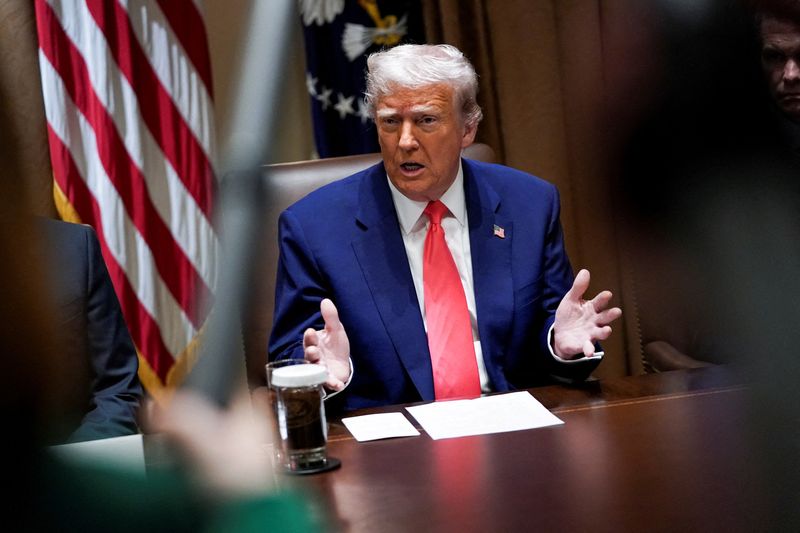
U.S. President Donald Trump is expected to soften the blow of his automotive tariffs by preventing duties from stacking on top of other tariffs he has imposed, while also scaling back some duties on foreign parts, the Wall Street Journal reported on Monday.
The move will mean that U.S. automakers paying Trump’s automotive tariffs will not be subject to other duties, such as those on steel and aluminum, the WSJ report said, citing people familiar with the matter.
The move will also be retroactive, meaning that automakers could be reimbursed for tariffs they have already paid, the WSJ report said.
Trump also plans to modify its tariffs on auto part imports, which will allow automakers to be reimbursed for up to an amount equal to 3.75% of the value of a U.S.-made car for one year, the WSJ report said.
Trump’s 25% tariffs on finished imported cars took effect in early April, while a 25% duty on foreign auto parts is set to take effect from May 3.
Trump is expected to announce the tariff relief before a trip to Michigan for a rally outside Detroit on Tuesday evening, the WSJ said.
The potential tariff relief is likely aimed at allowing automakers more time to shift supply chains to the U.S., in line with Trump’s tariffs.
Trump’s auto tariffs had ramped up concerns over heightened car costs in the U.S., given that even cars manufactured domestically still import a wide variety of components.
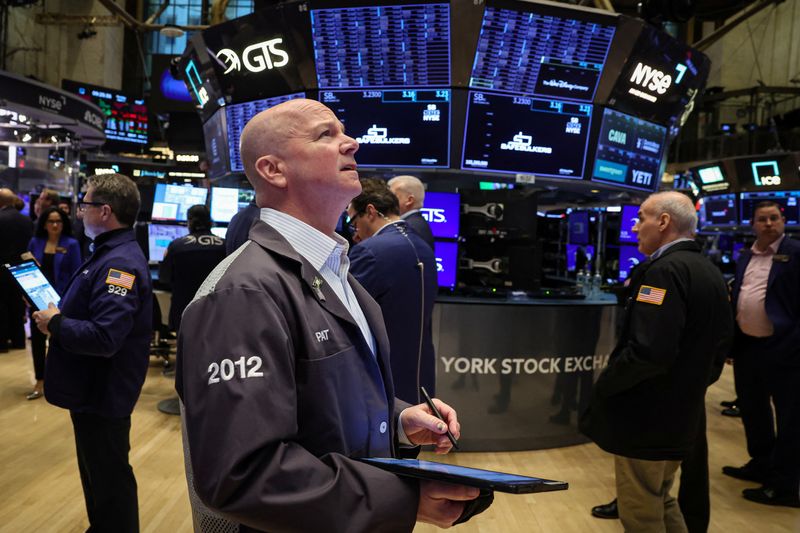
U.S. stocks saw modest gains on Monday, with the Dow and S&P 500 ending fractionally higher and the Nasdaq ending fractionally lower, as investors digested the latest comments from U.S. Treasury Secretary Scott Bessent and looked ahead to earnings reports from megacap American companies with a combined market value of around $20 trillion.
The Dow Jones Industrial Average closed up 114 points or 0.28%, while the S&P 500 index eked out a gain of 3 points, or 0.06%. The NASDAQ Composite index saw a small drop of 17 points, or 0.1%.
Trade hopes
Stocks were able to add to last week’s gains on hopes that the U.S. would start to announce some trade deals.
"There remains a lot of hope and hype about trade deals, and this might prevent a sharp slump in the SPX in the immediate term, but the index is at the top-end of its trading range and shouldn’t be chased beyond ~5500," Vital Knowledge analyst Adam Crisafulli said in morning’s note to clients.
In an interview with CNBC on Monday, Secretary Bessent said many countries have offered ’very good’ tariff proposals to the U.S.
"We are continuing to make substantive movement on negotiations with many of our trading partners," Bessent stated. "The negotiations with our Asian trading partners are going very well; the negotiations with the Republic of Korea have gone very well; the VP’s negotiations with India went very well; and I think we’ve had some very substantial negotiations with our Japanese allies."
He also stated that all aspects of the U.S. government are in contact with China and that it is up to China to de-escalate the situation.
The Trump administration has shown signs of wanting to ease tensions in the ongoing trade war, which has rattled markets and fueled fears of a global recession.
Earnings ahead: Apple, Microsoft, Amazon, Meta
Investors were eyeing earnings from the “magnificent seven” megacaps, including Apple Inc (NASDAQ:AAPL), Microsoft Corporation (NASDAQ:MSFT), Amazon (NASDAQ:AMZN), and Meta Platforms Inc (NASDAQ:META), this week.
"The Q1 earnings season (and Q1 economic data) have been decent, but this is in part because the full effects of tariffs haven’t been felt – that will soon change," Crisafulli added.
Microsoft and Meta are set to report on Wednesday, while Apple and Amazon are scheduled to report their earnings on Thursday.
These reports are key to gauging corporate resilience amid ongoing tariff tensions and capital expenditure worries around AI.
Earnings from other major sectors, like Visa (NYSE:V), Coca-Cola Co (NYSE:KO), and Caterpillar Inc (NYSE:CAT), were all due this week.
(Ayushman Ojha, Senad Karaahmetovic and Sam Boughedda contributed to this article).
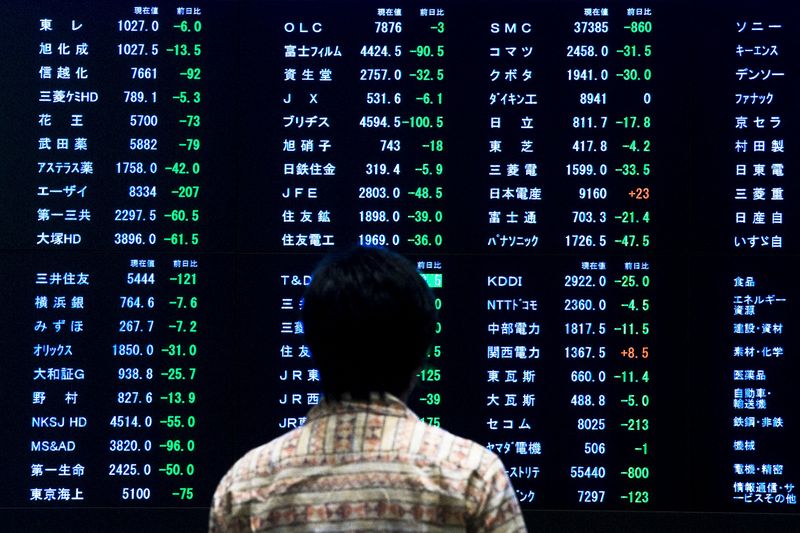
Most Asian stocks advanced on Friday, with technology shares tracking stellar overnight gains in their U.S. peers following stronger-than-expected earnings from Google owner Alphabet.
Japanese markets were the best performers in the region, as optimism over U.S. trade talks helped them rally past hotter-than-expected Tokyo inflation data that pushed up expectations of more interest rate hikes by the Bank of Japan.
Regional markets took a positive lead-in from Wall Street, which closed substantially higher on Thursday amid some optimism over trade talks between the U.S. and China. Hints of more interest rate cuts by the Federal Reserve also aided gains.
U.S. stock index futures rose in Asian trade, with Nasdaq 100 Futures up 0.5% following strong earnings from Alphabet Inc (NASDAQ:GOOGL).
Asia tech stocks boosted by Alphabet, AI optimism
Tech-heavy bourses such as Hong Kong’s Hang Seng, South Korea’s KOSPI, and Japan’s Nikkei 225 were the top gainers, advancing between 0.6% and 1.4% with the Nikkei in the lead.
Gains in tech came following U.S. stocks, after internet giant Alphabet clocked substantially stronger-than-expected earnings and flagged no changes in its artificial intelligence ambitions.
Before that, tech stocks were also boosted by both Amazon.com (NASDAQ:AMZN) and Nvidia (NASDAQ:NVDA) stating that AI-driven demand for chips and data centers was likely to remain solid, helping ease some fears of an investment slowdown in the sector.
The storm of positive factors helped spur buying into tech stocks, which were the most hit by a prolonged market downturn so far in 2025.
Among individual stocks, Baidu (NASDAQ:BIDU) Inc (HK:9888) soared 4% in Hong Kong trade after the Chinese internet giant launched updated versions of its flagship Ernie AI model. Electric vehicle maker BYD (HK:1211) rose 0.7% before its March quarter earnings, which are due later in the day.
Japan stocks rise past hot Tokyo CPI on trade deal hopes
Gains in tech boosted the Nikkei, while Japan’s TOPIX also added 1.1%.
This came even as Tokyo consumer price index inflation rose sharply in April, beating expectations and granting the BOJ more headroom to raise interest rates.
The central bank is widely expected to keep interest rates steady when it meets next week, but expectations for more hikes later this year are growing steadily.
Japanese markets have been on a tear this week after reports showed government officials were set to begin a new round of U.S. trade talks later this month.
Chinese stocks muted, trade deal hopes scattered
China’s Shanghai Shenzhen CSI 300 and Shanghai Composite indexes lagged their peers, moving in a flat-to-low range on Friday.
Underperformance in Chinese markets came as investors fretted over the long-term economic impact of a bitter trade war with the United States, after Washington and Beijing exchanged steep trade tariffs earlier this month.
Markets were little enthused by mixed signals on trade talks. U.S. President Donald Trump claimed his administration was in dialogue with China, while Beijing said no trade talks had taken place.
Broader Asian markets were mostly negative amid persistent risk aversion. Singapore’s Straits Times index shed 0.5%, while futures for India’s Nifty 50 index pointed to a flat open.

U.S. stock index futures rose on Thursday evening as investors piled into technology and artificial intelligence stocks following strong earnings from Google owner Alphabet, which also helped put trade uncertainty on the backburner.
Futures rose following another strong session on Wall Street, with tech gaining after Amazon.com and Nvidia flagged strong demand for AI data centers. Stronger-than-expected earnings from AI software developer ServiceNow Inc (NYSE:NOW) also aided tech stocks.
Investors were encouraged by President Donald Trump stating that talks with China were underway, although Chinese officials said no trade talks had taken place. Focus remained squarely on potential reductions in U.S. tariffs, amid heightened concerns over the economic impact of the trade war.
S&P 500 Futures rose 0.4% to 5,531.0 points, while Nasdaq 100 Futures rose 0.5% to 19,427.25 points by 19:46 ET (23:46 GMT). Dow Jones Futures lagged, trading sideways at 40,260.0 points.
Alphabet surges on strong earnings, boosts tech
Alphabet Inc (NASDAQ:GOOGL) shares rallied nearly 5% in aftermarket trade, after the company clocked much stronger than expected earnings for the first quarter and announced a $70 billion buyback.
The company also reaffirmed its ambitious AI development plans, offering more confidence that AI-driven demand for chips and data centers will persist. The company is among Wall Street’s biggest spenders on AI.
Still, Alphabet did flag some potential headwinds from macroeconomic uncertainty, while growth in its ad business revenue, which is its biggest moneymaker, also shrank from the prior quarter .
But Alphabet’s earnings set a strong precedent for other major Wall Street tech stocks, especially those with heavy exposure to AI.
Amazon.com Inc (NASDAQ:AMZN) and NVIDIA Corporation (NASDAQ:NVDA) rose more than 1% each after hours, while chipmaker TSMC (NYSE:TSM) added 0.5%.
More major tech earnings are due in the coming days, with Microsoft (NASDAQ:MSFT) and Apple (NASDAQ:AAPL) set to report next week.
Gains in tech stocks were a major boost to Wall Street on Thursday. The S&P 500 rose 2% to 5,484.78 points, while the NASDAQ Composite rose 2.7% to 17,166.04 points. The Dow Jones Industrial Average rose 1.2% to 40,093.40 points.
Consumer earnings underwhelm, Intel slides
Beyond most tech firms, earnings from other sectors were less upbeat, especially in sectors sensitive to economic ructions. Procter & Gamble Company (NYSE:PG), Chipotle Mexican Grill Inc (NYSE:CMG), American Airlines Group (NASDAQ:AAL), Skechers USA Inc (NYSE:SKX), and PepsiCo Inc (NASDAQ:PEP) all cut or withdrew their guidance due to uncertainty over consumer spending.
Intel Corporation (NASDAQ:INTC) slid 5% in afterhours trade as weak guidance offset consensus-beating earnings, with the struggling chipmaker also flagging heightened concerns over macro headwinds from a trade war.
A barrage of company earnings are due in the coming weeks, although focus will be more on guidance for the current year, especially in the face of heightened economic uncertainty.

By Joyce Lee, Hyunjoo Jin and Nandita Bose
SEOUL/WASHINGTON (Reuters) -South Korea and the United States agreed to craft a package of deals aimed at removing new U.S. tariffs before the pause on reciprocal tariffs is lifted in July, Seoul’s delegation said after the first round of trade talks in Washington.
The U.S. and South Korea had a "very successful" meeting on Thursday, U.S. Treasury Secretary Scott Bessent said afterwards.
"We may be moving faster than I thought, and we will be talking technical terms as early as next week," he told reporters.
Bessent and Trade Representative Jamieson Greer met with South Korean Finance Minister Choi Sang-mok and Industry Minister Ahn Duk-geun.
Neither side offered details on possible areas of agreement, but South Korea said in a statement it requested exemptions from reciprocal and item-specific U.S. tariffs, and offered cooperation on shipbuilding and energy as well as addressing trade imbalances.
"During the meeting, the two countries reached a broad agreement on the framework for future discussions," Ahn later told reporters. "We also agreed to hold working-level talks next week to determine the scope and structure of talks, with the goal of producing a ’July package’ by July 8."
Choi said more talks will be held in South Korea on May 15-16 with Greer.
"Discussions will focus on four key areas: tariffs and non-tariff measures, economic security, investment cooperation, and currency policy," Choi said.
AUTOS IN FOCUS
The discussions with South Korea took place as Bessent and other Trump administration trade team members met with a multitude of foreign finance and trade officials looking to strike tariff deals on the sidelines of this week’s meetings of the International Monetary Fund and World Bank Group in Washington.
South Korea, which faces 25% U.S. reciprocal tariffs, is among the first countries the Trump administration has initiated trade talks with, after its first face-to-face discussions last week with Japan, another key Asian ally slapped with 24% tariffs. Bessent was also due to meet Japanese officials on Thursday.
Choi said South Korea focused in particular on the automobile sector, which faces the greatest negative impact.
He also said South Korea’s finance ministry and U.S. Treasury will hold separate discussions on currency policy.
Choi told South Korean reporters that there was no mention of defense costs during the talks. Trump has previously said that sharing the cost of keeping U.S. troops in South Korea would be part of "one-stop shopping" negotiations with Seoul. But South Korea’s foreign minister said defense costs are separate matters from trade talks.
Ahn said there was no mention of the renegotiations of a bilateral free trade deal signed in 2017.
The South Koreans also asked for understanding from the Americans that the process could be affected by the "political schedule," apparently referring to the looming June 3 snap election in South Korea, which was called after former President Yoon Suk Yeol was ousted for his role in imposing martial law in December.
Acting President Han Duck-soo has expressed willingness to reach a deal, saying the country will not fight back against Washington as it owes the U.S. for its recovery from the 1950-1953 Korean War.
That has faced pushback from the liberal opposition who are favoured to win in the election, accusing Han of rushing talks for political gain.
Experts have also noted it may be difficult for South Korea to make any firm commitment on energy projects and defence costs under an acting president.
Trump’s energy security council plans to host a summit in Alaska in early June, when it hopes Japanese and South Korean officials will announce commitments to the Alaska LNG project, a source familiar with the matter said on Thursday.

Most Asian stocks rose marginally on Thursday as investors second-guessed recent optimism over a deescalation in the U.S.-China trade war, although Japanese markets outperformed on reports of more U.S. trade dialogue.
South Korean markets were an exception, with the KOSPI lagging its peers after gross domestic product data showed an unexpected contraction for the first quarter. This largely offset positive earnings from memory chip major and Nvidia (NASDAQ:NVDA) supplier SK Hynix.
Broader Asian markets tracked overnight gains on Wall Street, as investors were encouraged by U.S. President Donald Trump flagging an eventual, albeit unspecified reduction in trade tariffs on China. Trump’s cooling rhetoric against the Federal Reserve also aided sentiment.
U.S. stock index futures trickled higher in Asian trade. But optimism over Trump’s comments was seen cooling, given that Trump signaled any deal with China will require Beijing to approach Washington- a scenario that Chinese officials have shown little indication will play out.
Comments from other U.S. officials also raised some doubts over a U.S.-China deescalation.
Japan shares lead gains on trade talk reports
Japanese markets were the best performers on Thursday, with the Nikkei 225 adding nearly 1%, while the TOPIX rose 0.8%.
A slew of media reports said Japan’s Economic Revitalization Minister Ryosei Akazawa will visit the U.S. later this month for a second round of trade negotiations.
A separate report on Wednesday showed U.S. officials stating that they will not offer Japan special treatment from Trump’s trade tariffs. But Japanese ministers were seen maintaining their calls for smaller tariffs and more transparent trade agreements.

